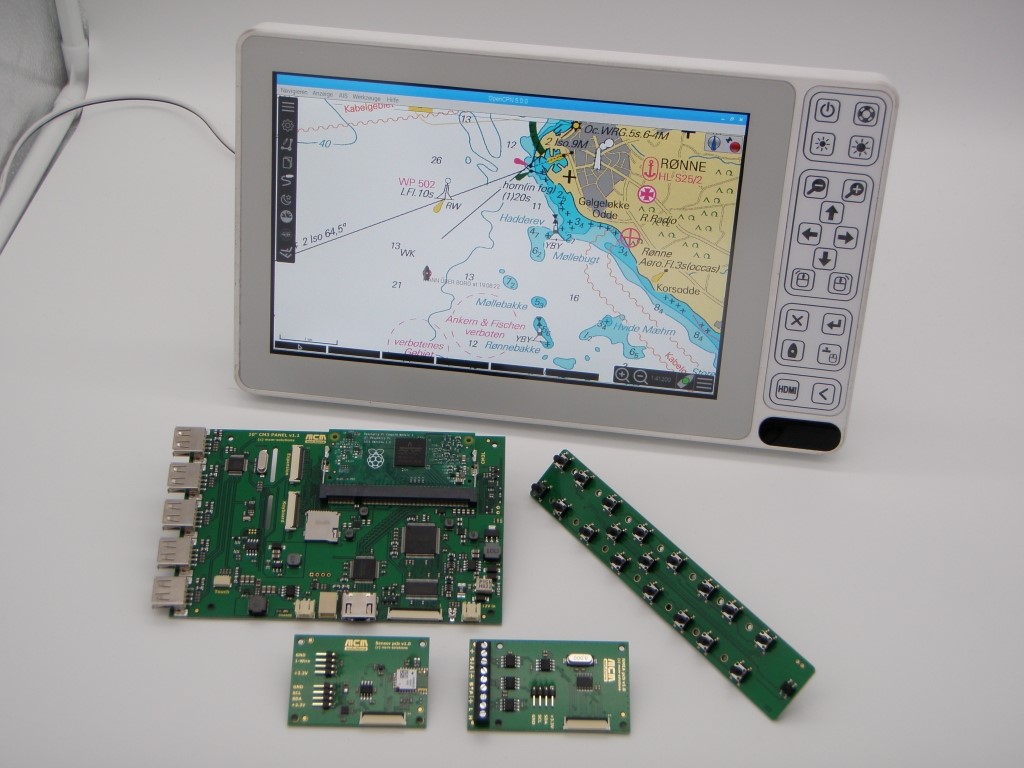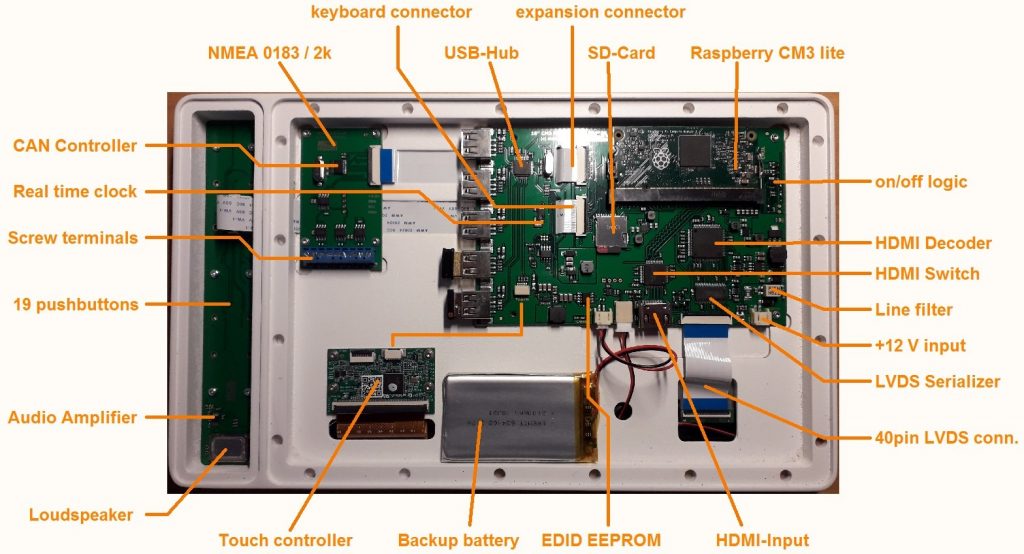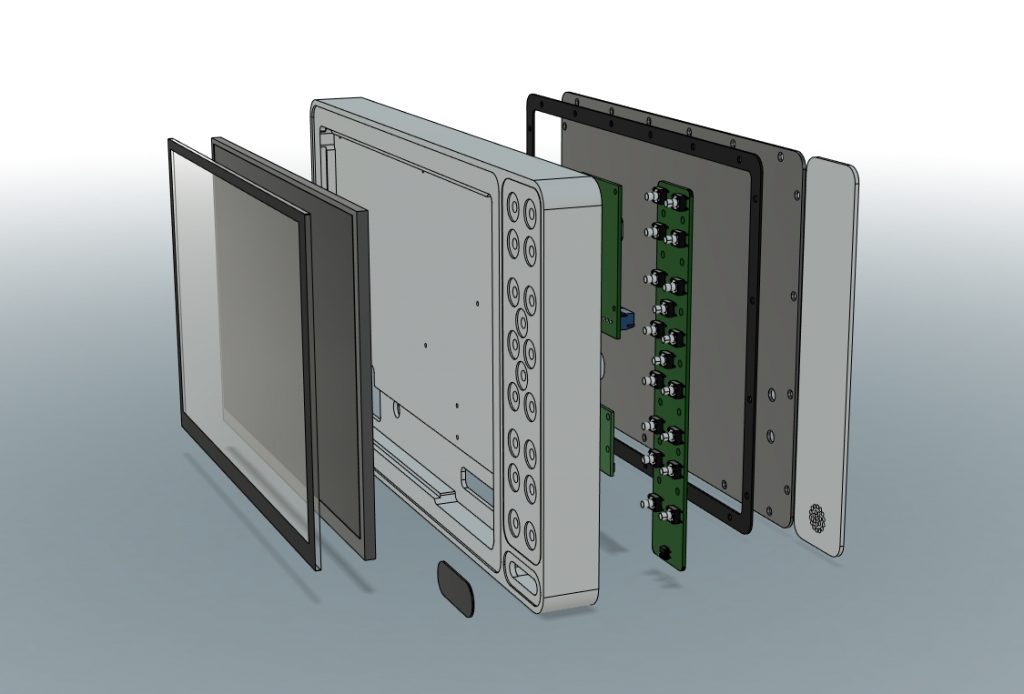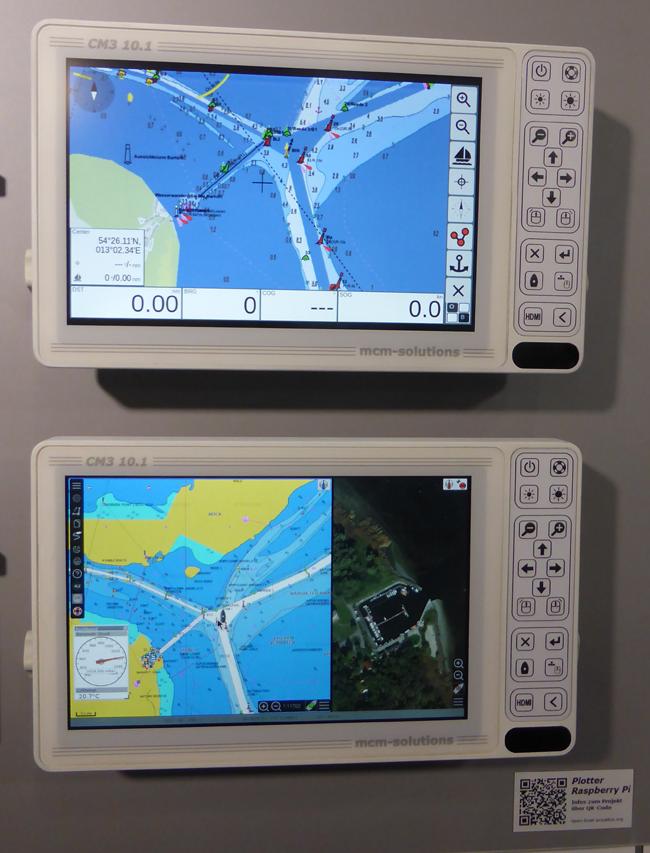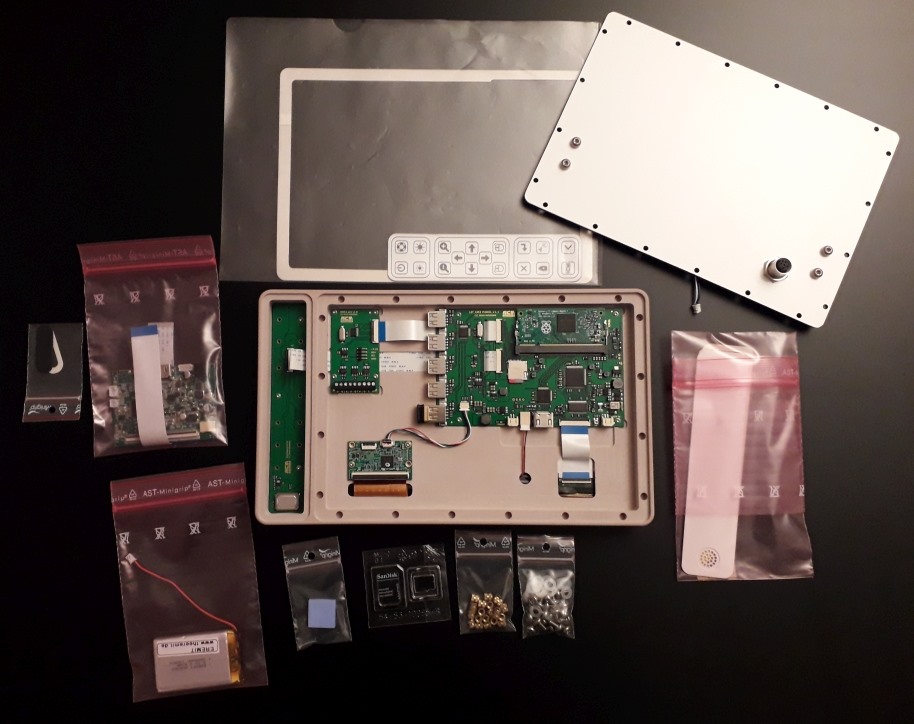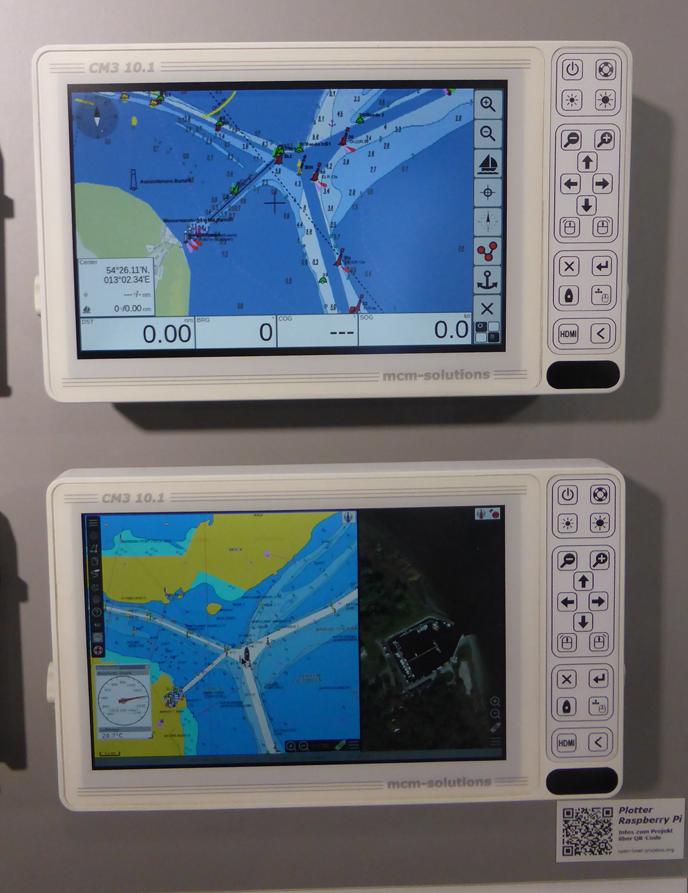First of all, a few important notes that you should definitely pay attention to.
Fig. 10 ″ plotter with Raspberry Pi and OpenCPN
Christian presented his 10 ″ plotter based on Raspberry Pi at Boot 2020 in Düsseldorf. An attempt was made to create a marine-grade device that could be used to navigate a boat.
Table of contents
hardware
Fig. Components of the 10 ″ plotter
The CM3 light compute module was used as the central processing unit and a number of other necessary hardware components were placed on a basic board.
The large base board contains the following components:
- Raspberry Pi Compute Module CM3 lite (BCM2837, Quad Core, 1.2GHz, 1GB RAM)
- SD card connector for 32GB SD card
- HDMI decoder
- HDMI switch
- Display control
- 5-way UBS hub
- Keyboard control
- Power supply
In addition to the base board, there are three other boards:
- Keyboard board with IR receiver for remote control and loudspeaker
- Touch controller for TFT display
- Expansion board for NMEA0182, NMEA2000
Display:
- 10 ″ TFT
- 1000 nits (suitable for daylight)
- 1280 x 1024 pixels
- 10 finger touchpad optically glued to the TFT
Front panel:
- Cast 2mm plexiglass plate
- anti-reflective
- hard-coated, scratch-resistant
- Anti finger print finishing
- Cover printed on the back
- glued watertight in the housing
Expansion options via internal USB ports:
- GPS mouse
- AIS receiver via DVBT stick
- BT dongle
- USB flash memory for cards
- License dongle for O-Charts maps
- Mouse / keyboard dongle for external operation
Fig: Device structure
The housing is made of micro-foamed plastic, which was elaborately machined on a CNC milling machine. In order to get the surface smooth and waterproof, the case was painted. Threaded inserts made of brass were provided in the housing for the circuit boards and the housing cover. The back consists of a coated aluminum plate and contains the necessary connectors to the outside world. Operation is via a waterproof membrane keyboard, which consists of a 0.2mm thick plastic film with a keyboard board underneath. Alternatively, the plotter can also be operated with a Bluetooth or IR remote control.
software
Fig. Above AVnav, below OpenCPN
The operating system image Raspberry Pi OS Buster with Toutchpad extensions is located in a 32GB SD card on the base board. Christian created two image versions. Once for AVnav and once for OpenCPN as navigation software. The software versions differ in terms of usability and support the special features of the navigation software. While AVnav is fully browser-based on touch operation, OpenCPN, on the other hand, is a desktop application that is operated with a mouse and keyboard. So that OpenCPN can be operated without a mouse and keyboard, a wide range of adapted remote controls with a mouse emulation was built. In addition, the most important key functions of OpenCPN such as zooming and various views have been assigned to keys. Raspberry Pi OS Buster has received some software extensions for this purpose.
Further information
In 2020 Christian launched a small series for the plotter as a kit and sold it to interested sailors. The project is currently not being pursued any further because the production of the parts for the plotter has proven to be too time-consuming and costly. In addition, hardly anyone interested was able to implement the project themselves and was dependent on Christian's preliminary work. At the end of 2021 Christian made a new attempt to develop cheaper and easier to build plotters. He was able to take into account the many experiences of this project. The discontinuation of the Raspberri Pi Compute Module CM3 shortly after the completion of the board set was particularly painful. That would have made it necessary to develop a completely new base board. It also turned out that the concept of the HDMI video controller with source switch for use as a plotter was oversized and the functionality could not be used properly. Overall, the use of the CM3 module required a complex and expensive base board to provide the missing functionality. In comparison, a standard Raspberry Pi would have had many things on board that could have been used. His new concept for a 7 ″ plotter This time it is based on a standard Raspberry Pi with a few additional components and a standard housing that can be obtained commercially. This significantly reduces the effort and even less experienced makers can implement the project themselves.
https://www.segeln-forum.de/thread/73813-10-plotter-im-eigenbau/ (german)
http://forum.openmarine.net/showthread.php?tid=1547 (english)
pictures
Fig. Component set
Fig.Plexiglas rear side (trade fair version)
Fig.AVnav and OpenCPN
Fig. Above remote control for AVnav, below for OpenCPN
